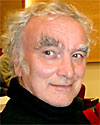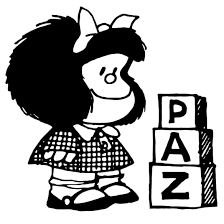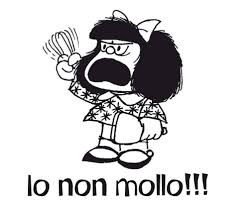ABOUT ME

Associate Professor Piero P. Giorgi
BSc Hon. (Univ. Bologna, Italy), PhD (Univ. Newcastle, UK), Fellow of Aus Inst.Biol.
# Research Affiliate at the National Centre for Peace & Conflicts Studies
University of Otago (Dunedin, New Zealand)
# Research Affiliate at the Research Unit MODI, Department of Education
University of Bologna (Bologna, Italy)
Piero is the proud father of David and Marisa and grand-father of Lily and Jasper.
He enjoys immersions in nature, exploring people’s diversity, reading and writing.
In his limited spare time he likes writing historical novels, such as: “Il filo di seta” (2007) Alberto Perdisa Editore, Bologna and “I numeri di Leonardo” in preparation
Piero loves traveling with his wife Silvana
Short intellectual profile
Piero P. Giorgi feels strongly about avoiding specialisation in academia and creating bridges between science and humanities.
Since 1967 he has worked in developmental biology and specialised in the development of brain and behaviour in vertebrates since 1970 and humans since 1990. This last aspect was related to the application of modern neuroscience to sociology and peace studies, which is now (since 2004) his major research interest.
In 1981 Piero moved to Australia doing research and teaching at the School of Biomedical Sciences of the University of Queensland, were he has enjoyed an ecceptional degree of academic freedom.
From 1988 to 2002 Piero has done research on the history of medicine.
In 1992 Piero, with other colleagues at the University of Queensland, has established the BA degree program of Peace and Conflicts Studies (still offered at the PG level in 2022). From that date to 2003 he has also been teaching at the Faculty of Social Sciences for that program.
From 1995 to 2002 Piero had an active involvement in multiculturalism and in the promotion of the Italian culture in Australia, particularly as the founder and editor of Convivio, a bilingual journal of ideas in Italian studies.
Since his retirement from formal university teaching (2005), Piero has been promoting peace studies in Italy, in association with the Centre for European Studies in Gargnano (Gargnano, Brescia) that was established within the Franciscan convent of Saint Thomas.
Following the sale of the convent, Piero and Silvana moved to Australia to continue following their intellettual interests (Peace Studies and Medieval Spirituality respectively) while living in a retirement village in Brisbane. Concerning his recent interests, see articles in his blog <www.pierogiorgi.org>.
Brief curriculum vitae (updated August 2022)
1965 – Degree in Biological Sciences Hons (University of Bologna, Italy).
1966 – Italian Army, compulsory military service (artillery officer).
1967 – University of Bologna, research scholarship (embryology).
1968 – University of Parma, Italy, tutor (biochemistry).
1969 – University of Newcastle/Tyne (UK), Medical Research Council, research officer (neurochemistry).
1974 – PhD (University of Newcastle/Tyne, UK).
1974 – Université de Genève (Switzerland), assistant (biochemistry)
1975 – Université de Lausanne (Switzerland), maître assistant (neuroembryology, neurochemistry)
1981 – University of Queensland (Brisbane, Australia), senior lecturer (molecular neuroscience, peace studies, medical history).
1995 – Fellow of the Australian Institute of Biology.
2003-2004 – Associate Professor at the Australian Centre for Peace and Conflict Studies, University of Queensland.
Since 2004 – Member of the European Centre, Gargnano (Brescia), Italy.
Since 2010 – Associate Professor and Research associate at the National Centre for Peace and Conflict Studies (NCPACS), University of Otago, Dunedin, New Zealand.
Since 2020 – Research Associate at the Research Unit MODI, Department of Education, University of Bologna, Italy.
Summary of research (updated August 2022)
1965-67 – Mechanisms of germ cell migration in frog embryo.
1968-70 – Regulation of nucleic acid and protein synthesis by polyamines in the vertebrate brain.
1971-72 – Cell separation of neurons and glial cells and their ability to synthesise proteins in the rat brain.
1971-72 – Pathogenesis of the scrapie agent in mouse.
1972-74 – Synthesis of myelin proteins in the developing rat brain
1972-74 – Axonal transport of proteins in the rabbit optic pathway.
1974 – Determination of DNA/cell in different species of Xenopus (Amphibia).
1975-78 – Grafting of ectopic eyes in Xenopus embryos for the study of axonal guidance.
1975-78 – Methods for neuroanatomical tracing.
1977-80 – Metabolism of myelin proteins in the rabbit optic pathway.
1981-85 – Developmental effect of eye removal in Xenopus embyos.
1981-85 – Determination of cell density in retinal wholemounts.
1985-88 – Neuroanatomy of the optic pathway in Megachiroptera (Pteropus sp.)
1985-1988 – Molecular characterisation of neuronal types in the olfactory system of Amphibia.
1985-1988 – Uptake of exogenous proteins by neurons.
1989-2001 – Translation and commentary of medieval medical texts (Consilia 1288 and Anothomia 1316).
1989-2001 – Biographies of medieval physicians (Taddeo Alderotti and Mondino de’ Liuzzi).
1995-now – Origins of violence in humans.
2000-now – Peace theory.
2003-now – Ethical values in democracy and citizenship.
2002-now – Information in biology.
2003-now – Study of human nature and post-natal definition of human behaviour.
2005-now – Voluntary public lectures and training.
Summary of university teaching
1968-69 – Biochemistry
1975-80 – Human neuroanatomy
1981-90 – Developmental biology
1985-2004 – Human neuroscience
1991-2004 – Peace studies
1995-2004 – Medical history
(2005 – Retirement from university)
Ten most significant publications (other than Peace Studies)
Giorgi, P. P. (1970) “Polyamines and amino acid incorporation in vitro into microsomes of rat cerebral cortex” Biochemical Journal, 120: 643-651.
Narang, H.K., Shenton, B., Giorgi, P.P. & Field, E.J. (1972) Scrapie agent and neurons. Nature (London), 240: 106-107.
Giorgi, P.P., Karlsson, J.O., Sjostrand, J. & Field, E.J. (1973) “Axonal flow and myelin protein in the optic pathway” Nature (London), 244: 121-124.
Giorgi, P.P. & Van der Loos, H. (1978) Axons from eyes grafted in Xenopus can grow into the spinal cord and reach the optic tectum. Nature (London), 275: 746-748.
Giorgi, P. P. & Du Bois, H. (1981) “Labelling by axonal transport of myelin-associated proteins in the rabbit visual pathway” Biochemical Journal, 196: 537-545
Key, B. & Giorgi, P.P. (1986) “Selective binding of soybean agglutinin to the olfactory system of Xenopus” Neuroscience, 18: 507-515.
Giorgi, P.P. & Pasini, G.F. (1992) Mondino de’ Liuzzi – Anothomia. Istituto per la Storia dell’Università di Bologna, Bologna.
Giorgi, P.P. & Pasini, G.F. (1997) Taddeo Alderotti – Consilia. Istituto per la Storia dell’Università di Bologna, Bologna.
Giorgi, P.P. (2007) Il filo di seta. Edizioni Perdisa, Bologna (historical novel).
For publications in Peace Studies, see in Menu: Detailed Academic CV, page Peace Studies.

